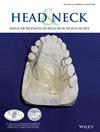Machine learning-derived prognostic signature for progression-free survival in non-metastatic nasopharyngeal carcinoma
Abstract
Background
Early detection of high-risk nasopharyngeal carcinoma (NPC) recurrence is essential. We created a machine learning-derived prognostic signature (MLDPS) by combining three machine learning (ML) models to predict progression-free survival (PFS) in patients with non-metastatic NPC.
Methods
A cohort of 653 patients with non-metastatic NPC was divided into a training (n = 457) and validation (n = 196) dataset (7:3 ratio). The study included clinicopathological characteristics, hematologic markers, and MRI findings in three machine learning models—random forest (RF), extreme gradient boosting (XGBoost), and least absolute shrinkage and selection operator (LASSO)—to predict progression-free survival (PFS). A Venn diagram identified the overlapping signatures from the three ML algorithms. Cox proportional hazard analysis determined the MLDPS for PFS.
Results
The RF, XGBoost, and LASSO algorithms identified six consensus factors from the 33 signatures. Cox proportional hazards analysis showed that the MLDPS includes age, lymphocyte count, number of positive lymph nodes, and regional lymph node density. Additionally, MLDPS effectively stratified prognosis, with low-risk individuals showing better PFS than high-risk individuals (p < 0.001).
Conclusion
MLDPS, based on clinicopathological characteristics, hematologic markers, and MRI findings, is crucial for guiding clinical management and personalizing treatments for patients with non-metastatic NPC.

 求助内容:
求助内容: 应助结果提醒方式:
应助结果提醒方式:


